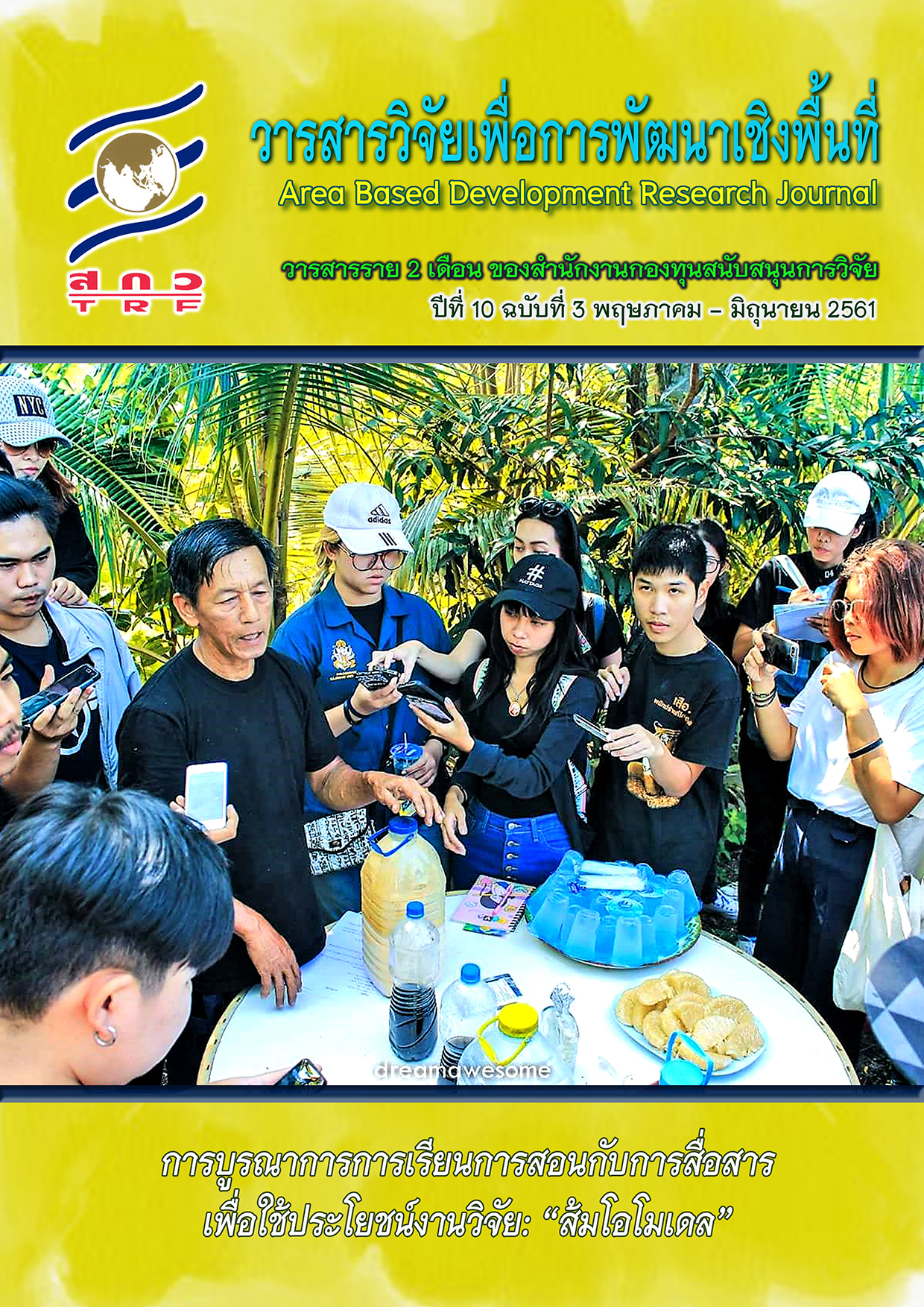รูปแบบการท่องเที่ยวเชิงนิเวศ บ้านแหลมสวรรค์ จังหวัดอุบลราชธานี
Main Article Content
Abstract
This study aims to study the community’s context and tourism potential of Ban Leam Sawan, Ubon Ratchathani province, and to develop the community-based ecotourism through a Participatory Action Research. The research process involved 10 local researchers. The findings indicate that due to the community’s proximity to Sirindhorn Dam, Ban Leam Sawan has been impacted by the flooding that damaged villagers’ crops, resulting in the abandonment of cultivation. The majority of young adults then went out of the community to work and a few made a living by fishing and diving for submerged logs in the community. As for the tourism potential of Ban Leam Sawan, there are 3 potentials including 1) the physical attributes with both natural and cultural attractions, 2) the accessibility to land transportation, and 3) the availability of only one restaurant and one resort as tourist facilities. However, the community’s hygienic conditions and tourism facilities have to be further developed. Based on the analysis, the model of ecotourism that should be developed is a one-day trip on raft that fits into the village context in terms of local lifestyle and environmental setting. Such trip would offer to tourists the experiences related to local lifestyle, under the themes “the journey of underwater logs” and “the journey of fish”. The former involves the diving for submerged logs and the making wooden pestles, and the latter refers to the raising of fish in cage and the manufacturing of fish products.
Article Details
Area Based Development Research Journal values copyright protection and licensing to safeguard author rights and facilitate the appropriate dissemination of research. Our policies ensure openness, accessibility, and attribution. Authors retain copyright ownership, and articles are published under a Creative Commons Attribution License (CC BY), allowing sharing, adaptation, and proper attribution. Authors have the freedom to publish under the CC BY license, granting broad reuse and distribution permissions. The journal supports posting articles on third-party repositories, adhering to institutional and funding restrictions. Author guidelines detail copyright and licensing requirements, empowering authors with knowledge about their rights and responsibilities. These policies cultivate an environment of collaboration, openness, and responsible sharing, benefiting authors and the research community while honoring intellectual property rights.
